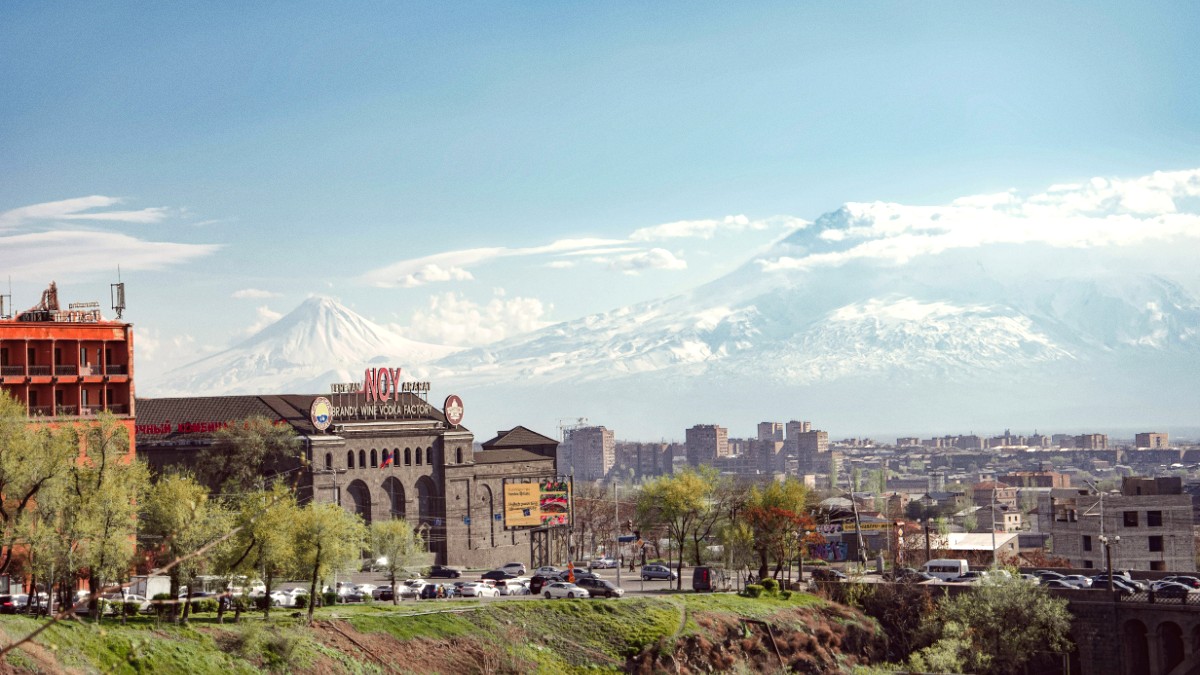
Armenia
Armenian cuisine is one of the oldest in Asia, reflecting a rich history and its position at the intersection of various empires and trade routes. It draws influences from Middle Eastern, Mediterranean, and Eastern European culinary traditions.
Food often features fresh, local ingredients, abundant herbs, and aromatic spices. The Tonir, an ancient clay oven, is a traditional cooking method, bringing forth an unique flavor.
Armenians are famously hospitable. Portions are generous, and hosts often suggest more food. Refusing politely or accepting a small amount is common. Dishes are often shared family-style, especially appetizers (meze) and grilled meats.
Toasts hold a significant part of any meal, especially when alcoholic beverages are present. A "tamada" (toastmaster) often leads the toasts, which can be elaborate and frequent. Be ready to take part.
Breakfast typically consists of bread, cheese, eggs, and coffee or tea. Lunch often serves as the main meal (1 PM - 3 PM). Dinner usually begins later (7 PM - 9 PM or after), especially in summer, and serves as a social affair.
Marinated and grilled meat (pork, lamb, beef, or chicken) cooked on skewers over charcoal. A national favorite. Widely available at traditional restaurants and roadside eateries.
Where to find: Most traditional Armenian restaurants.
Grape leaves (or cabbage, eggplant, bell peppers) stuffed with seasoned ground meat and rice. Vegetarian options with lentils are also common. Served with Matzoon (yogurt-garlic sauce).
Where to find: Almost all Armenian restaurants.
Traditional Armenian flatbread, thin and flexible, baked in a Tonir. Recognized by UNESCO as Intangible Cultural Heritage. Served with almost every meal.
Where to find: Bakeries and markets throughout the city.
Lahmacun (Armenian pizza), Börek/Pirozhok (savory pastries), Shawarma/Doner (Middle Eastern wraps).
Armenian Brandy (Cognac), local Wine (Areni, Voskehat varieties), Oghi (Fruit Vodka). Non-alcoholic: Jermuk (mineral water), Tan (salty yogurt drink), Compote, Sour Cherry Juice, Armenian Coffee.
For refined Armenian and European cuisine in elegant settings.
Numerous options throughout Kentron for quality Armenian and international cuisine at reasonable prices.
For quick, affordable, and satisfying bites from local eateries to bustling markets.
Yerevan's culinary scene features variety. Find Italian, Georgian, Russian, Middle Eastern, Chinese, Japanese, Indian, and various fast-food chains.
These options are especially present in the central Kentron district, for different preferences.
From cozy Italian trattorias to Asian eateries, the city's international food scene expands dining possibilities beyond traditional Armenian fare.
Many international restaurants are tourist-friendly and feature English menus.
Many naturally vegetarian dishes. Vegan options are growing in modern cafes.
Limited dedicated Halal restaurants; Kosher food is very limited.
Awareness is not widespread. Consider a Translation card.
Communication with staff outside larger restaurants may pose a challenge. Carry a translation card.
Beyond simply dining, Yerevan offers immersive culinary experiences for engagement with Armenian food culture.
These eateries feature a traditional Tonir (clay oven) on premises. You can often watch Lavash being baked fresh, adding an authentic visual element to your meal.
A truly immersive experience.
A growing number of stylish wine bars in Yerevan present tastings of local Armenian wines. An opportunity to explore the country's ancient wine-making heritage in a contemporary setting.
Saryan Street is known for its wine bars.
Indulge in sweet treats like Gata (sweet bread with Khoriz filling), Pakhlava (Armenian baklava), and Sujuk (walnuts coated in grape molasses).
New Year/Christmas includes Harissa, dolma, ghapama. Easter tradition brings colored eggs, special sweet gata, and rice pilaf.
Marinated meat grilled on skewers over charcoal, a national favorite. Found at most traditional restaurants and roadside eateries.
Grape leaves or vegetables stuffed with seasoned ground meat and rice. Often served with yogurt-garlic sauce.
A festive pumpkin dish stuffed with rice, dried fruits, nuts, and honey. Baked until tender and sweet.
Yerevan Wine Days (May), Dolma Festival (often outside Yerevan), Harvest Festival (Autumn) for local produce.
Check local listings for dates.
Gum Market is a feast for the senses, with fresh food, local street food, and prepared meals. Yerevan Vernissage features food vendors selling traditional sweets.
Experience local flavors firsthand.
Armenia a variety of local cheeses, including string cheese (chechil) and aged options, great as appetizers.
Seasonal fresh fruits, especially apricots and pomegranates, are a staple of Armenian cuisine. Enjoy them fresh or in juices.
Fresh herbs like dill, parsley, cilantro, tarragon, and mint are liberally used in many dishes, adding freshness and aroma.
Armenian cuisine reflects a blend of influences. Do not miss the local markets for fresh produce and homemade treats.